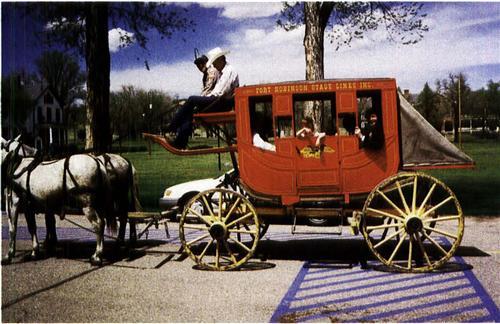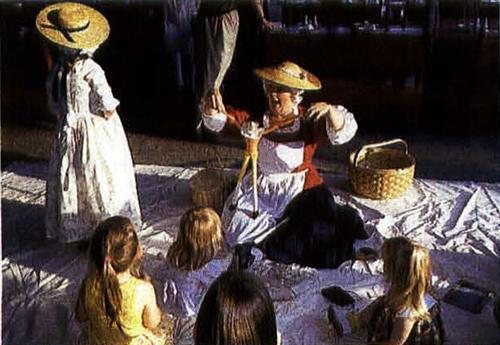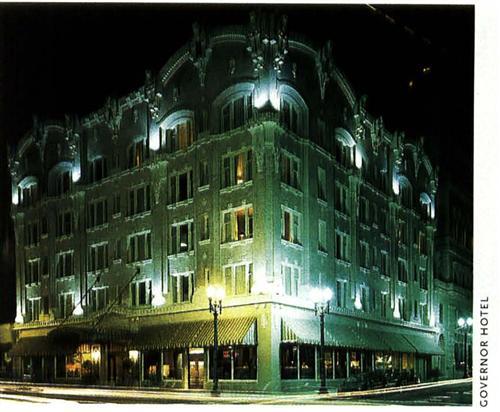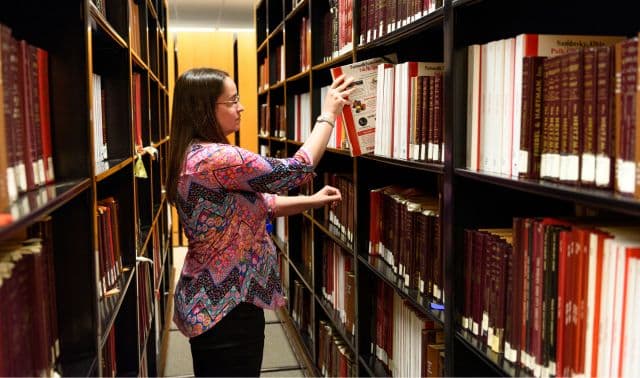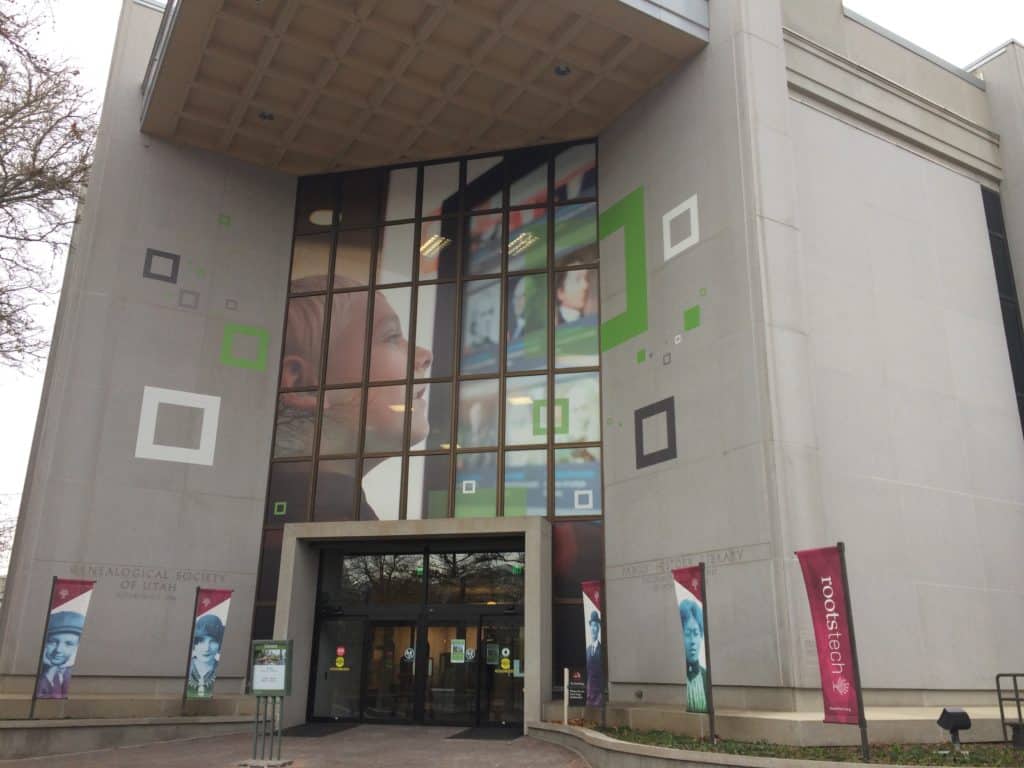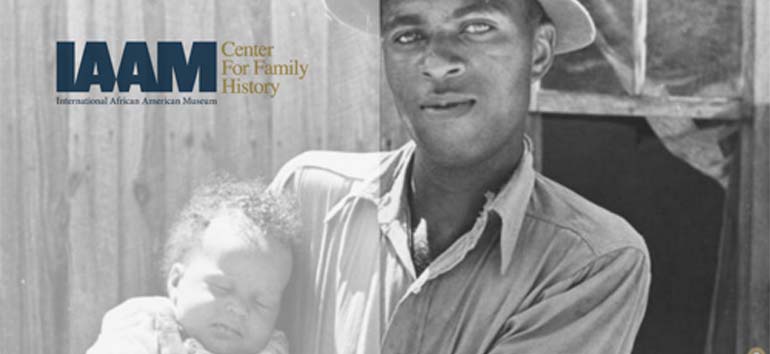Have you ever daydreamed about being from another era or wished you could go back in time to see what it was really like “way back then”? These dreams are getting closer to reality as more and more museums and historical destinations focus on the “experience” of history. Whether you’re bumping into Thomas Jefferson on the streets of Colonial Williamsburg or sleeping in military barracks at Nebraska’s Fort Robinson, it’s never been easier—or more fun—to learn about our nation’s past.
We spotlighted 10 places that offer a colorful assortment of sights, activities, performances and experience covering a smorgasbord of time periods. Happy time traveling!
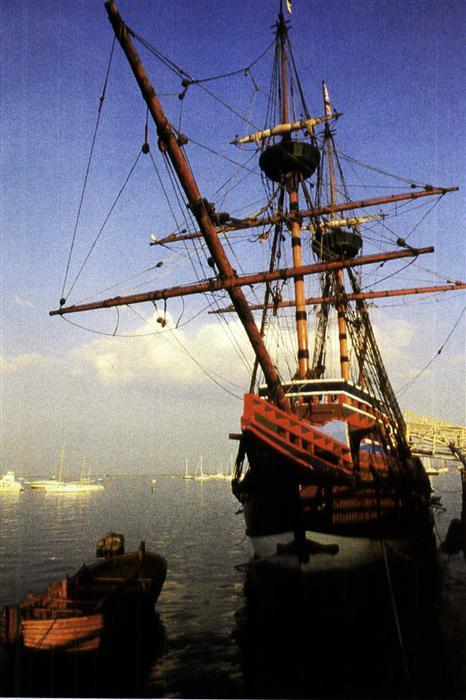
Our country’s revolutionary past seems to seep from every cobblestone in Boston, which is why the best way to explore the city is on foot. A number of “trails” have been established to let visitors discover Boston at their own pace.
Stop in the new Dreams of Freedom Immigrant Center (617-695-9990, <www.dreamsoffreedom.org>) to get a map of the Immigrant Heritage Trail, and be sure to check out its exhibits celebrating Boston’s rich immigrant heritage — from the Pilgrims to those who are settling in the city today. The trail highlights parks, side streets, churches, cemeteries and historic buildings that are part of Boston’s ethnic tapestry. For information on the center and trail and links for researching your own Boston roots, visit <www.bostonfamilyhistory.com>.
As a staunchly anti-slavery city, Boston has deep African-American roots. Housed in the African Meeting House, the Museum of Afro-American History (617-725-0022, <www.afroammuseum.org>) tells the story of African-Americans in the region during the Colonial years. It’s also a stop on the Black Heritage Trail, a 1.6-mile walking tour of pre-Civil War historical sites.
Beginning on Boston Common, America’s oldest park, a wide, red line points the way along the Freedom Trail. This 2.5-mile trail winds its way through the central city, Old Boston and the North End and then over the Charles River to Charlestown, ending at Bunker Hill. It encompasses many key Revolutionary sites, including the Old State House where the Boston Massacre took place, Paul Revere’s house and the final resting places of John Hancock and Boston’s founder, John Winthrop. Contact the Boston National Historical Park at (617) 742-5415 for guided tours, or grab a map and forge your own way.
Bed-and-breakfasts abound in Boston, especially in the bohemian South End. Contact the Bed and Breakfast Agency of Boston (800-248-9262, <www.boston-bnbagency.com>).
Situated on the banks of the Mississippi River, 120 miles northwest of New Orleans, Natchez was the heart of the “Cotton Kingdom” in the 1840s to 1860s. The city is proud of its well-preserved antebellum past and gives visitors endless opportunities to step into its pocket of Southern history.
The Natchez National Historical Park (601-446-5790, <www.nps.gov/natc>) represents three aspects of Natchez history. Melrose, an 80-acre estate built by lawyer and wealthy plantation owner John T. McMurran, includes a Greek Revival mansion, restored slave quarters, formal gardens and grounds buildings. The Park Service is still developing the William Johnson House, a Greek Revival-style townhouse that was the home of freed slave William Johnson, and the Fort Rosalie Site where the French built a fortification in 1716 that was later occupied by the British, Spanish and Americans.
Scores of antebellum homes and churches are open year-round, but the best time to visit is during the Natchez Pilgrimages (800-647-6742, <www.natchezpilgrimage.com>) in the spring and fall. Guided tours of dozens of antebellum homes are conducted by hoop-skirted hostesses each day, and lively programs are performed each evening. For example, the Southern Road to Freedom, performed by the Holy Family Choir, chronicles the African-American experience in Natchez from the Colonial period to today.
But hundreds of years before cotton was king, this area was home to the Natchez Indians, Mound Builders who lived here until the French drove them out in 1729. The Grand Village of the Natchez Indians (601-446-6503, <www.mdah.state.ms.us>) preserves what’s left of their civilization. The site features a museum, a reconstructed Natchez house and three ceremonial mounds.
Natchez is brimming with pre-Civil War; and Victorian bed-and-breakfasts. The 31- room Monmouth Plantation (800-828-4531) is recommended by the National Trust for Historic Preservation.
if you really want to get away from it all, head to the northwest corner of Nebraska and Fort Robinson State Park (308-665-2900, <www.ngpc.state.ne.us/parks/frob.html>). Established in 1874 to protect Indian Agencies after the Civil War, Fort Robinson was continually expanded to become one of the largest military installations on the northern Plains. It was last used as a World War II prisoner of war camp from 1943 to 1946. This is where guards imprisoned and killed Oglala Sioux chief Crazy Horse, and Walter Reed, Red Cloud, Dull Knife and Arthur MacArthur all have histories here.
Instead of just visiting for a few hours, tourists can actually stay overnight in the enlisted men’s barracks or officer’s quarters. You can also experience an early morning trail-ride breakfast, a chuck-wagon buffalo stew cookout, a campfire sing-along and many other sights and sounds of the western frontier that you wouldn’t get out of a day visit.
During the day, you can see and learn about the site of the Cheyenne Outbreak, the last great gathering of the Sioux Nation and the World War II Prisoner of War Camp. During the 1930s and 1940s, the fort also served as a Quartermaster remount depot, where horses were received, examined, cared for and issued to mounted units. The fort also trained some 14,000 dogs in its K-9 training center.
Visitors can explore the park by train, Jeep and stagecoach or on foot or horse- back. Beyond the many historic buildings, Trailside Museum and Fort Robinson Museum lie 22,000 acres of countryside in the rugged Pine Ridge region waiting to be explored.
established in the early 18th century as a French fur-trading post, Detroit is perhaps better known for its automotive history. Henry Ford drove his first car from Detroit to his home in Dearborn nine miles away in 1896, setting the stage for the city to become the center of the 20th-century American automotive industry.
Ford’s interest in ingenuity and invention also laid the framework for Dearborn’s Henry Ford Museum and Greenfield Village <www.hfmgv.org>, the largest indoor/outdoor museum in the country. Ford began planning his museum in the 1920s and it is now a 12-acre collection of objects of innovation. It chronicles the evolution of the car in American life, complete with more than 100 cars and even a 1940s roadside diner. Visitors will also see Edgar Allan Poe’s writing desk, the limousine John F. Kennedy was shot in and — believe it or not — the Oscar Mayer Wienermobile.
Greenfield Village is a conglomeration of historically significant buildings that played a part in America’s shift from an agricultural to industrial society: Ford’s birthplace, Thomas Edison’s laboratory, an 1880s Ohio sheep farm and the Wright Brothers home and cycle shop — all staffed by costumed presenters. You can even make your own history by getting married at the Martha Mary Chapel, built by Ford in 1929 as a tribute to his mother and mother-in-law.
With its proximity to Canada, Detroit was a major stop on the Underground Railroad, making it a logical home for the Museum of African-American History (313-494-5800, <www.maah-detroit.org>), the largest of its kind. Its permanent exhibitions chronicle 400 years of African-American legacy and heritage. Included is a model slave ship with life-size figures as well as Mae Jemison’s NASA flight suit and a ballot box used by those then considered “colored” people.
No talk of living history museums is complete without mentioning Colonial Williamsburg (800-HISTORY, <www.history.org>), the town that served as an incubator of American ideals and celebrates its 75th anniversary as an attraction this year. It was here that patriots such as Patrick Henry, George Washington and Thomas Jefferson challenged British authority and called for American independence.
Visitors can easily fill several days of a vacation here; it’s the largest outdoor living history museum in the country. The 173-acre Historic Area is made up of 88 original, 18th-century structures and more than 300 reconstructed buildings. In addition to significant buildings, such as the Governor’s Palace and Capital, visitors will encounter countless costumed interpreters. You’re just as likely to run into Thomas Jefferson as a wigmaker or other regular “locals.” Each is well-armed with Colonial knowledge and opinions, and is eager to converse.
At Colonial Williamsburg, you can become more than just an observer — you can get your hands dirty with history, literally. Hands-on 18th-century-style brickmaking, gardening, housekeeping, crafting and more are all part of the experience. You can even see what it’s like to fight a fire bucket-brigade style or “enlist” in the military.
To immerse your family in even more history, check into one of Williamsburg’s 28 Colonial Houses for the night. All are furnished with authentic period reproductions and antiques, and each has its own character.
While in the area, many tourists also visit Jamestown, America’s first permanent English settlement, and Yorktown, where the Revolutionary war ended. Both are only a few miles away.
Sacramento and California’s history are forever intertwined with the small town of Coloma, where gold was discovered on Jan. 24,1848. Sacramento became the main trading site for the ensuing Gold Rush, shooting its population from 1,000 to 40,000 in just two years.
Today, both towns offer ample sites for exploring the region’s enterprising past. In Coloma, 40 miles east of Sacramento, the Marshall Gold Discovery State Historical Park (530-622-3470, <www.parks.ca.gov>) commemorates James Wilson Marshall’s big find with restored buildings, living history demonstrations and a mining exhibit. You can even try your luck at panning for gold in the American River. The park celebrates Gold Rush Days in October.
Another event that helped this region prosper is the transcontinental railroad line, which terminated in Sacramento. The California State Railroad Museum (916-445-6645, <www.csrmf.org>) documents and explains the era of railroading. Exhibits explain how trains work, how track is laid and what it was like to travel by rail.
The Railroad Museum is located in Sacramento’s historic Old Sacramento neighborhood, a 28-acre riverfront district of 53 historic buildings, which has been restored from slum-like conditions. You can tour this Old West enclave on foot or horse-and-buggy and stay on the Delta King(800-825-5464, <www.deltaking.com>), the 1927 restored riverboat that sunk dockside in 1981.
Among the landmark attractions in Old Sacramento are the B.F. Hastings Building, where the Pony Express ended, the Big Four Building, where much of the transcontinental railroad was planned, and the California Military Museum (916-442-2883), an interpretive look at the rich military past of our nation.
this vibrant city with its trove of cultural attractions is a vacation in itself. But it’s also a good base for exploring the historical enticements in nearby Oregon City and Vancouver, Wash.
Just across the Columbia River from Portland, Fort Vancouver (360-696-7655, <www.nps.gov/fova>) is a good point to start learning about the region’s pioneer heritage. Established by the British in 1825 as headquarters for the Hudson Bay Company, it served as the first stop for the cast of characters exploring, trapping and settling in Oregon country. The fort was relinquished to the US Army and became Camp Vancouver. Today, in addition to reconstructed 19th-century buildings, living history demonstrations and historical re-enactments, the site’s Public Archaeology Program involves visitors in the ongoing excavations through special activities and tours. Also, don’t miss Officer’s Row across the street — 21 Victorian homes built for officers stationed at Camp Vancouver.
Twenty miles south of Portland lies Oregon City, which served as the end of the Oregon Trail, where pioneers could file claims for free land. At the End of the Oregon Trail Interpretive Center (503-657-9336), mixed media theaters and an exhibit hall housed in three covered-wagon-shaped buildings take visitors on the rugged journey thousands of pioneers endured. Oregon City is dotted with several other historical houses and museums worth exploring. Visit <www.endoftheoregontrail.org> for more information.
Back in Portland, save some time for the Oregon History Center (503-306-5198, <www.ohs.org>), a rich repository of Oregon artifacts presented in rotating exhibits. The Oregon Historical Society’s research library allows visitors to access its extensive collection of books, journals, maps, photographs and countless hours of oral histories.
Within walking distance of the Oregon History Center is the grand Governor Hotel (503-224-3400, <www.govhotel.com>), which opened in 1909 and features an Arts and Crafts exterior and Lewis and Clark-inspired lobby decor.
for a more spontaneous, do-it-yourself vacation, head to the edge of Texas to the Lower Rio Grande, a place shared by the people of two countries and one heritage. Los Caminos del Rio (Roads of the River) is a 200-mile heritage corridor weaving along and over the US-Mexico border. More than 230 historical sites await exploration in this land that has its own, unique cultural flavor developed over the last 250 years.
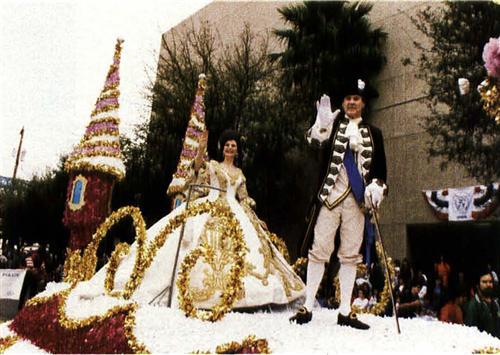
Some towns have historical districts, museums and monuments, but other historical destinations are still being developed, which is part of the charm of the trip. Guerrero Viejo, for instance, was once a thriving Mexican town but was reduced to ruins when the joint governments dammed the river in 1953. It wasn’t until the early 1990s that the waters receded somewhat, revealing part of the architecturally distinctive city. It’s only accessible by a rocky, 9-mile dirt road, and there’s no visitors center to greet you — this is heritage travel at its grittiest, but rewarding to those who are turned off by crowded living history museums.
To experience the local culture and customs, plan your trip around one of the many annual festivals in the region. Indian and Spanish traditions come together on Dec. 12 in Laredo, Nuevo Laredo and Reynosa when matacbín dances are performed on the feast day of Our Lady of Guadalupe. Write the Rio Grande Valley International Chamber of Commerce (Box 1499, Weslaco, TX 78599) for a calendar of annual festivals.
Several Texas state parks along the route offer camping and recreational activities. Contact the Texas Parks and Wildlife (800-792-1112, <www.tpwd.state.tx.us>) for more information. For more information on the heritage trail, contact Los Caminos del Rio of Texas and Mexico (Box 415, Laredo, TX 78042, caminos@icsi.net) or see <www.thc.state.tx.us/travel/LosCam.html>.
Santa Fe has something for everyone with its colorful tapestry of Spanish, Pueblo Indian and pioneer history combined with striking natural beauty.
The historic Plaza in downtown Santa Fe has been the nucleus of the city’s activity for nearly 400 years. Once the terminus of the Santa Fe Trail, it’s now home to a cluster of historic monuments, galleries and museums and serves as the grounds for festivals and fairs.
On the north side of the Plaza sits the unassuming Palace of the Governors (505-827-6483, <www.palaceofthegovernors.org>), the oldest government building in the United States. Originally built in 1610 as Spain’s seat of government for the southwest, it now houses a museum that tells the rich history of the city, New Mexico and the region through thousands of artifacts and period rooms.
The Museum of Indian Arts & Culture (505-476-1250, <www.museumofnewmexico.org>) spent eight years with Native American elders, artists, scholars, teachers, builders and writers to develop “Here, Now and Always,” an extensive permanent exhibit exploring the evolution of the region’s earliest people. In addition to ancient artifacts, visitors learn the area’s stories by listening to recorded voices of contemporary Native Americans.
Reserve a day to experience Spanish Colonial New Mexico at El Rancho de las Golondrinas (505-471-2261, <www.golondrinas.org>), a living history museum located just south of Santa Fe. Original and reconstructed buildings and costumed “villagers” bring this historic ranch alive, especially during theme weekends, such as the Civil War weekend in May that re-enacts artillery and marching demonstrations, camp life and historic battles.
Santa Fe and environs brim with historic plazas, districts and missions. Most of New Mexico’s 19 pueblos welcome visitors to respectfully observe their way of life and some tribal ceremonies. Contact the Santa Fe Convention and Visitors Bureau for a pueblo visitors guide (800-777-CITY).
For historic lodging, check into La Fonda (800-523-5002, <www.lafondasantafe.com>), which is decorated with artwork and details created by local artisans. (See page 26 for more on this and other historic hotels.)
Being the oldest permanent European settlement in the United States with a culturally rich 437-year history makes St. Augustine, Fla., a unique and delightful vacation destination. Many of the attractions revolve around the “oldest” theme. You can learn about the history of Florida’s penal system at the Old Jail (904-829-3800), browse the original “superstore” at the Oldest Store Museum (904-829-9729), experience how living quarters have evolved in the Oldest House (904-824-2872) and learn a lesson at the Oldest Wooden Schoolhouse (888-OLD-SCHL).
St. Augustine’s historical gem is the 300-year-old Castillo de San Marco (904-829-6506, <www.nps.gov/casa/home/home.htm>). This large masonry fort features 12-foot-thick walls made of coquina, a limestone made from broken seashells. The well-preserved site is symbolic of the city’s tumultuous history, which over time saw it controlled by the Spanish, British, Spanish (again), US, Confederates and finally US again. Exhibits and living history demonstrations take visitors through its colorful past.
For a taste of Spanish colonial life, take a stroll through the Spanish Quarter Village (904-825-6830). This nine-building living history museum re-creates the homes, gardens and workshops of 1740s St. Augustine and is brought to life by role-playing guides.
St. Augustine, which is easily explored on foot, is also home to the Fountain of Youth Archaeological Park (800-356-8222), where Ponce de Le6n landed in 1513. Besides seeing the fabled source of eternal life, visitors can also explore findings from the Timucua Indian settlement, one of the most important archaeological finds in the Southeast.
Several area companies offer guided tours by foot, carriage, boat or train. Or, to explore the spooky side of St. Augustine, contact Ghost Tours of St. Augustine (888-461-1009, <www.aghostlyexperience.com>), which claims its stories are thoroughly researched through historical documents and personal diaries.
If you’re willing to splurge on lodging, look into the Moorish Revival-style Casa Monica Hotel (800-648-1888, <www.casamonica.com>), which has a history all its own dating from 1888.
Links to most attractions mentioned can be found at <www.oldcity.com>.
From the May 2002 issue of Family Tree Magazine

